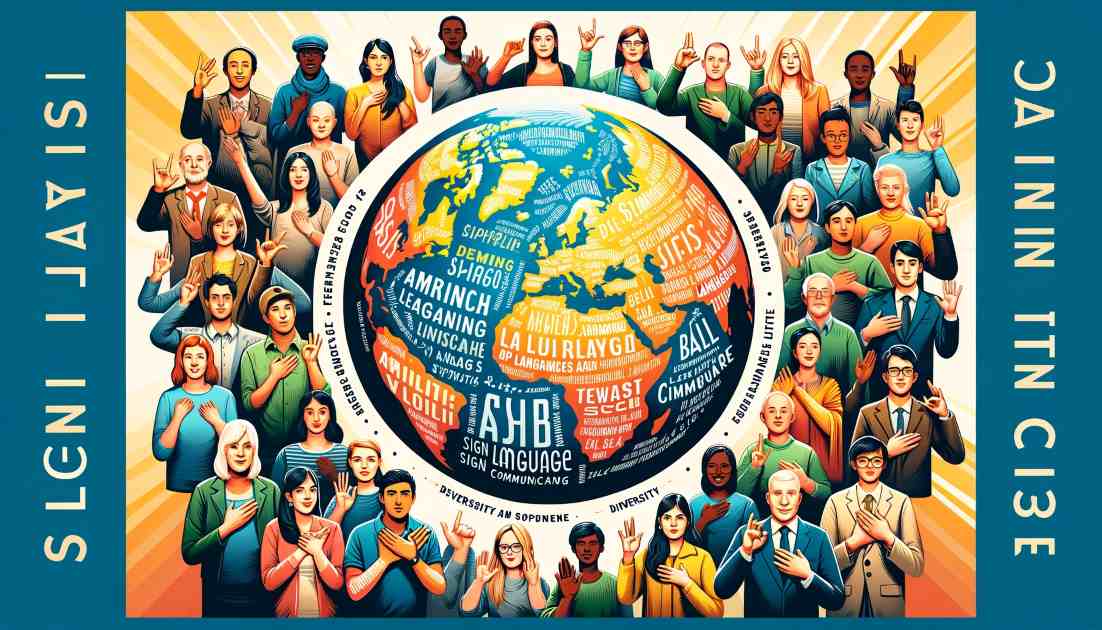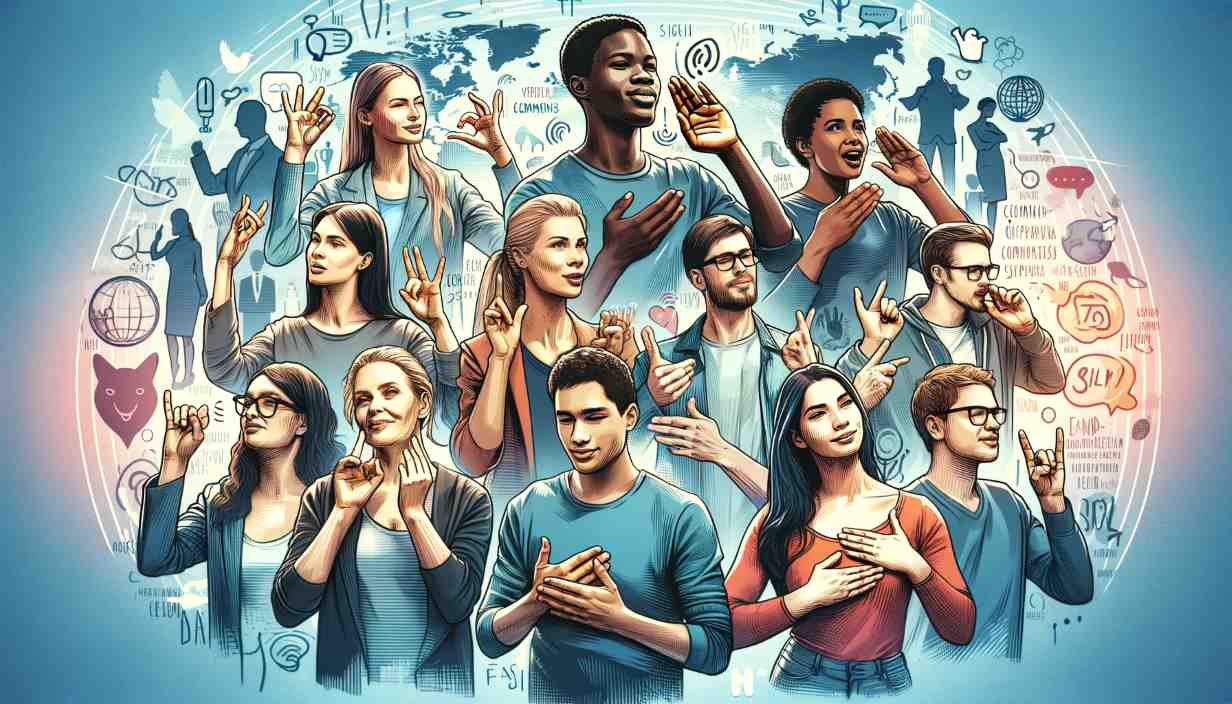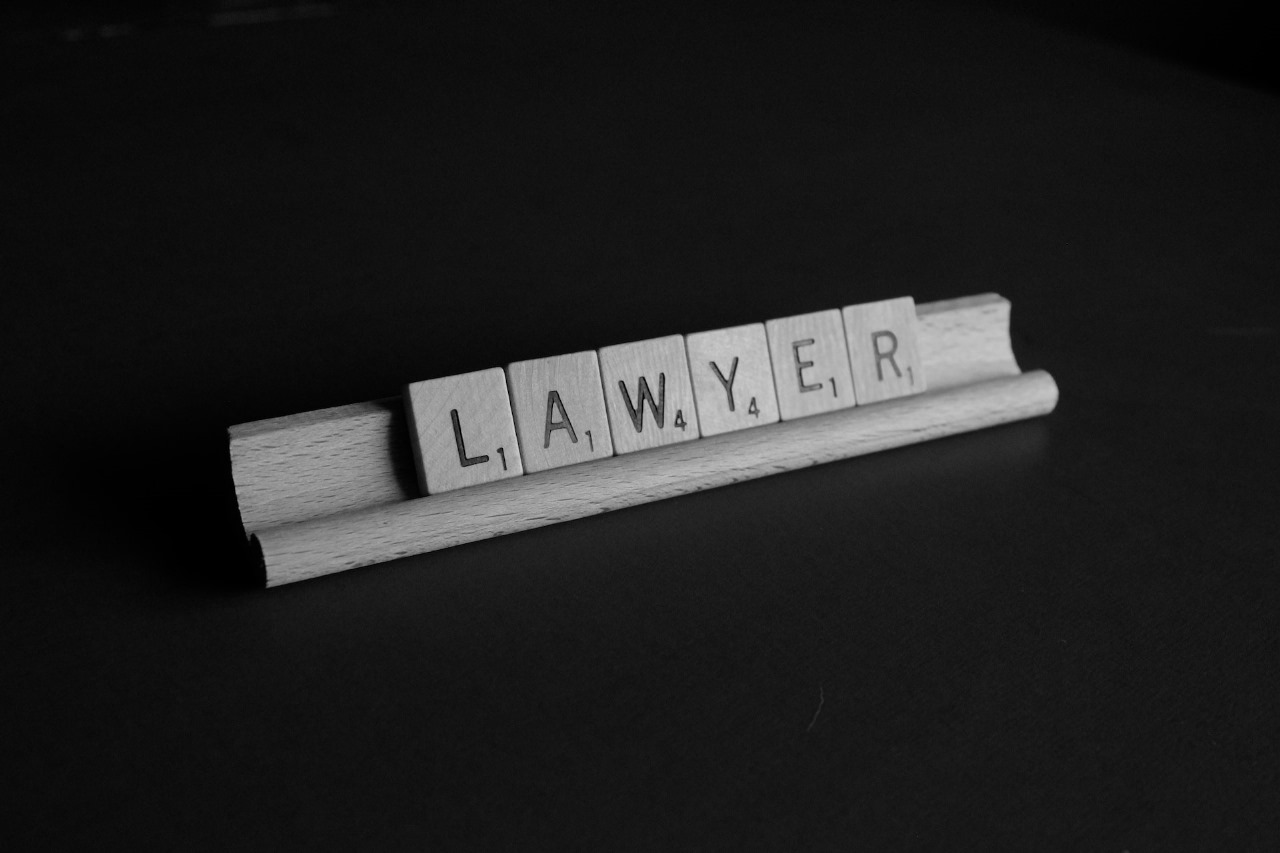Introduction to Sign Language Diversity
Perhaps in the broad tapestry of human communication, no question rings through with more import than “Is Sign Language Universal?,” signaling an often myth-bound issue. It is on the basis of this background that I seek to understand sign languages in their complexities of features, uniqueness, and what roles they play in bridging communication gaps within diversities of cultures and communities.
The Myth of a Universal Sign Language
First, an assurance needs to be brought forth that sign languages are as rich and varied as spoken ones. Contrary to common belief—there being a single universal sign language in the world is not true. More than 300 different sign languages exist and have developed within some specific deaf communities. They have their own syntax, grammar, and even idioms, just like spoken languages. In other words, this finding shows the complex richness carried out by sign languages, which are in total disproof of this very myth about sign languages.
Example of Diversity: ASL vs BSL
Delving deeper, American Sign Language (ASL) serves as a prime example of this diversity. ASL is a full, natural language that is part of the United States and Canada and carries its own set of signs produced by movements of the hands, facial expressions, and postures of the body. American Sign Language (ASL) is vastly different from British Sign Language (BSL), with a serious difference, even completely autonomous. This reflects the difference of the same two branches, but this time concerning spoken English in the US and the UK and still offers a diversity of languages.
Historical and Cultural Influences
Furthermore, the relationship among spoken and signal languages unveils any other layer of complexity. For instance, whilst ASL and British English percentage a spoken language root, ASL is more closely associated with French Sign Language (LSF) due to historic influences. This interconnection between sign languages and their ancient, geographical, and cultural contexts is a charming factor, underscoring their distinct identities.
Recognition and Status of Sign Languages
“Is Sign Language Universal?” additionally activates a discussion approximately the recognition and standing of those languages. Despite their richness and depth, signal languages have often confronted demanding situations in gaining professional reputation. This lack of recognition can result in extensive barriers in education, legal rights, and access to services for deaf individuals. The warfare for recognition isn’t pretty much language; it is about acknowledging the cultural and social identity of deaf communities worldwide.


Sign Language in Education
In the world of training, the importance of sign languages can’t be overstated. For deaf children, get entry to to education of their local sign language is crucial for cognitive and social development. Educational systems that contain sign languages open doorways to inclusive studying, permitting deaf students to completely have interaction and excel. This technique no longer most effective blessings deaf novices however also enriches the instructional surroundings for all, fostering a deeper expertise and appreciation of linguistic variety.
Technological Advancements and Accessibility
Technology, too, performs a pivotal role in bridging the space between deaf and hearing communities. Advances in technology have made it less complicated for deaf people to talk with folks who do now not know sign language. Video relay offerings, for instance, allow for real-time translation among signal language and spoken language, facilitating clearer and extra effective verbal exchange. Such technologies are instrumental in breaking down barriers and selling inclusivity.
Linguistic Research and Insights
Furthermore, the relationship among spoken and signal languages unveils another layer of complexity. For instance, while ASL and British English share a spoken language root, ASL is more closely associated with French Sign Language (LSF) due to historic influences. This interconnection between sign languages and their ancient, geographical, and cultural contexts is a charming factor, underscoring their distinct identities.
The Role of Sign Language Interpreters
“Is Sign Language Universal?” additionally activates a discussion about the recognition and standing of those languages. Despite their richness and depth, signal languages have often confronted demanding situations in gaining a professional reputation. This lack of recognition can result in extensive barriers to education, legal rights, and access to services for deaf individuals. The warfare for recognition isn’t pretty much language; it is about acknowledging the cultural and social identity of deaf communities worldwide.
Conclusion
In the training world, the importance of sign language can’t be overstated. For deaf children, getting entry to education in their local sign language is crucial for cognitive and social development. Educational systems that contain sign languages open doorways to inclusive studying, permitting deaf students to interact and excel completely. This technique no longer most effectively blesses deaf novices but enriches the instructional surroundings for all, fostering deeper expertise and appreciation of linguistic variety.
Technology, too, plays a pivotal role in bridging the space between deaf and hearing communities. Advances in technology have made it less complicated for deaf people to talk with people who do not know sign language. Video relay offerings, for instance, allow for real-time translation between signal language and spoken language, facilitating clearer and more effective verbal exchange. Such technologies are instrumental in breaking down barriers and selling inclusivity.






Leave a Reply